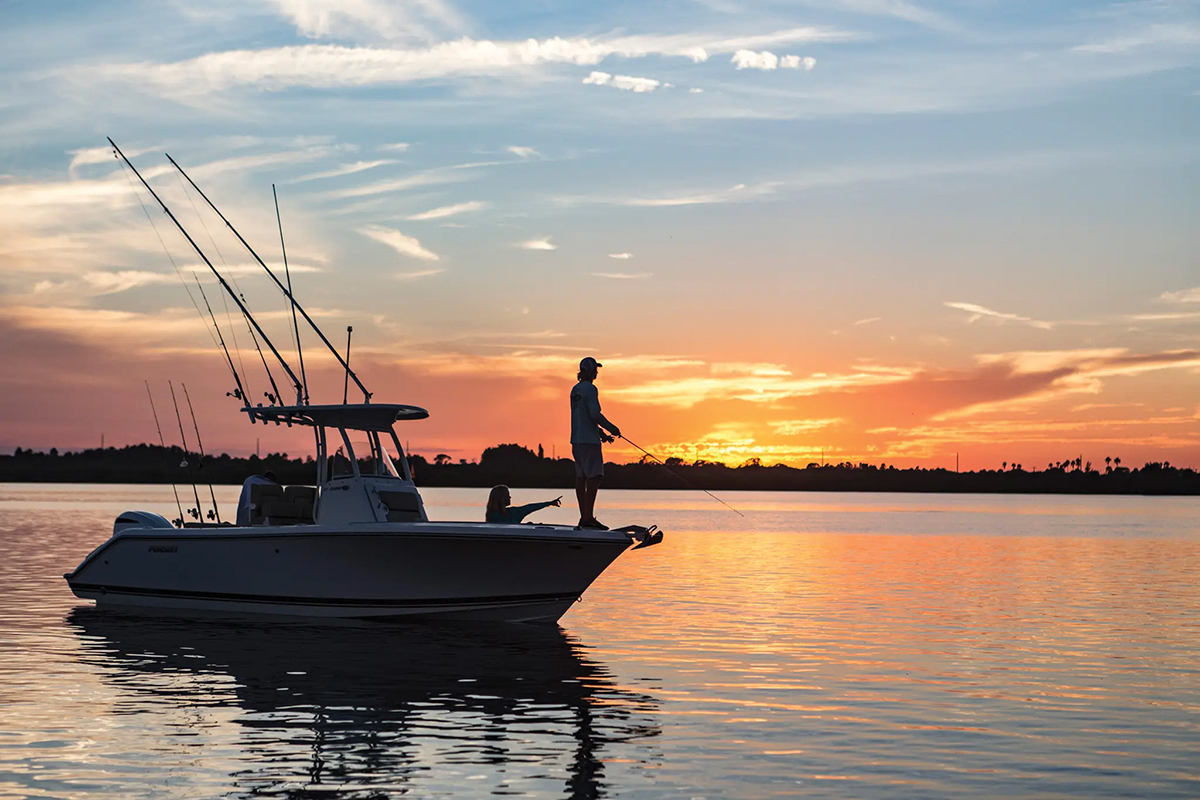Navigation lights clearly indicate there’s another boat on the water.
By Mark King
There’s nothing more relaxing than a summer evening cruise with your family. The water is calm, the air is a little cooler and it’s a pastime enjoyed by countless boaters throughout the season. But while dusk quickly turns into night, it’s vital to under-stand the proper regulations of navigation lights to ensure the utmost safety for you and other vessels on the water.
The Collision Regulations state there should be a masthead light, port and starboard lights as well as a stern light. The masthead light is white and covers an unbroken arc across the center of the bow, 112.5 degrees along each side for a total of 225 degrees. The port sidelight is red and covers an arc of 112.5 degrees from dead ahead along the port side, while the starboard light is green and covers the same degrees to starboard side. The stern light is a white light along the centerline and covers an arc of 135 degrees. How navigation lights are displayed may vary from vessel to vessel, depending on hull size, model style, etc. but this is the general rule.
While navigation lights clearly indicate there’s another boat on the water and the direction it’s heading, there are important points to remember when you encounter another vessel at night. If you see a red and green light in front of your boat and the red light is on your starboard and the green is on your port, the boat is heading straight for you. If you see a red light dead ahead you are looking at the port side of a boat and if the red light is moving from your right to left, it’s passing from your starboard to port. While in theory this is simple enough, there are many factors that hinder the visibility of navigation lights, which is when problems can potentially arise.
To ensure your navigation lights are visible, start with a simple inspection of your boat’s exterior at dock level, then at water level and a little higher up above the deck line. Remove any equipment that interferes with the visibility of the lights. Gear such as fender holders, dinghies, life rings, bowlines, etc. can easily obstruct lights. If equipment is blocking the light(s), adjust the item or move it to another on board location. Sometimes there’s a problem with the way the lights are installed, especially on older, smaller boats. If your lights have fogged lenses, you may want to replace them. They can be an extreme hazard since they may be hard to see while cruising along a shoreline of a city or a marina.
Also, during your inspection look at your lights at night up close and from a distance. Determine if they are clearly visible and bright enough. If they aren’t, consider installing stronger bulbs if the circuit can handle it. Or perhaps, just install better, larger lights. Navigation lights should be tested regularly throughout the season. If you don’t regularly cruise at night, frequently turn them on for at least half an hour. Corrosion and lack of use are two of the most common causes of light failures. A 30-minute test once a month will clearly indicate any problems.
After checking the visibility of your lights while the boat is at the dock, try the same tests during operation. The running angle of your boat may also completely block your lights. One of the largest problems is the stern light, which can often be hidden by the stern wake. The port and starboard lights can also be hidden by the hull when the boat is running at its true operating angle.
It’s a fun experience to cruise at night, but precautions must be taken. Also remember, night vision can be illusory and depth perception usually altered significantly. It’s hard enough to see what else is out there, don’t make it difficult for everyone else to see you.
Keyword : boat lights, Boating, boating at night, docking, evening cruise, Marinas, navigation lights, night vision, stern light, summer cruise, visibility boat lights, Boating, boating at night, docking, evening cruise, Marinas, navigation lights, night vision, stern light, summer cruise, visibility
